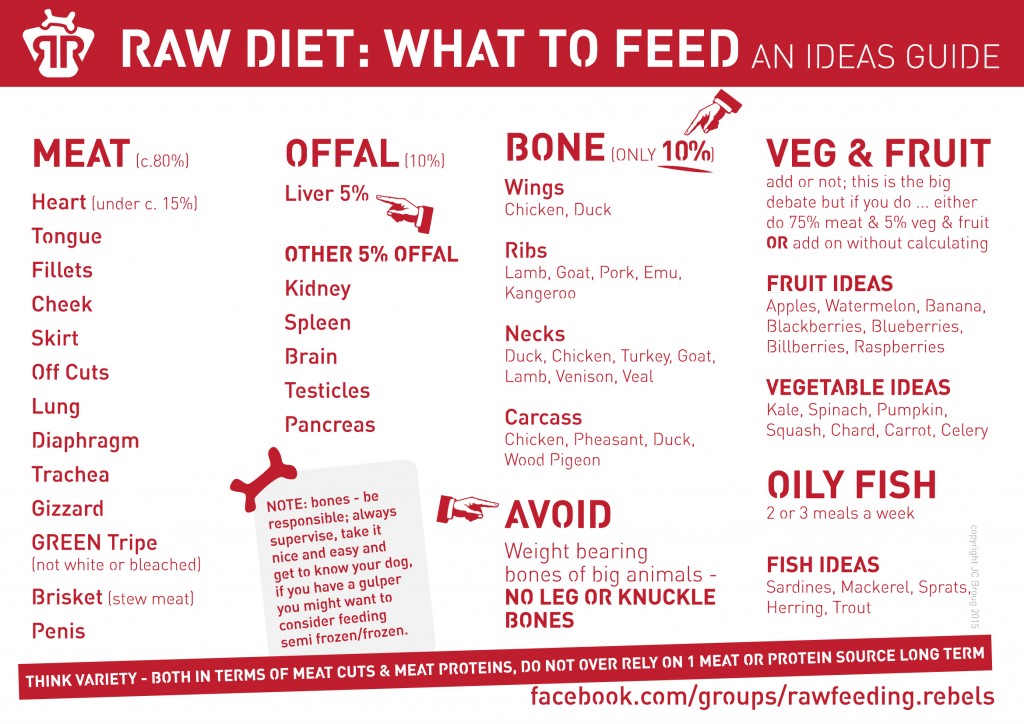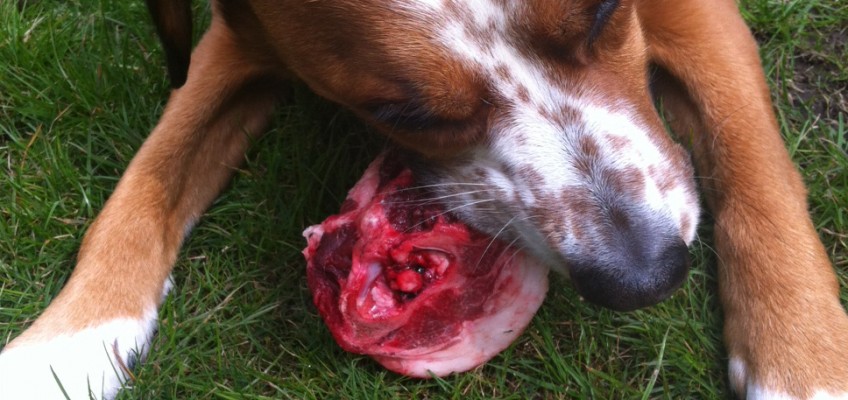Feeding bones safely is essential! So be sensible and bare in mind our Top 10 Tips of doing so when feeding bones.
- Do NOT feed weight bearing bones (of big animals in particular) they are too dense and too hard, can splinter and break teeth – just avoid them – there are plenty of other bones much more suitable!
As a side note: in the case of beef I would also avoid the ribs – as they are just too hard – cows are huge, just imagine the weight they carry. - Always supervise when feeding bones – it’s essential!
- If you have a gulper feed frozen or hand feed your bones until you know they have learned to chomp properly (there is NO issue with frozen)
- Avoid bones that due to size are a choking hazard for your size of dog or are too large to have in one sitting, example being ox tail – often ox tail is already chopped up, now depending on your size of dog they could be a choking hazard, a whole ox tail however is different.
- If you’ve just started raw feeding start at the LOW END! It’s important to know your dogs tolerance to bone; what they can handle.
- Do NOT go on graphs in regards to bone content as is not safe as it varies greatly. Bone content is highly dependent on eg how old the animal was at slaughter, how it was reared, how it was butchered and with what intend (meat for human consumption or not).
- Watch poo; crumbly, straining, white, rock hard are all indicators that it was too much bone, so tone it down, you need to feed less bone. (click here for the Poo Guide)
- Suitable bones have meat on them, and plenty! Bones that are stripped bare of any meat – avoid, use them for bone broth.
- NEVER feed COOKED or SMOKED bones, even if you bought them from a shop! Cooking/smoking/heat etc changes the structure of bone; making bone brittle and prone to splintering, making it a true hazard.
- Remember the guideline is around 10% bone ONLY.
What are recreational bones?
Recreational bones are often weight bearers, also things like marrow bones. Those raw feeders that do use them tend to let their dog strip all the meat and then REMOVE the actual bone. These bones are dense, hard and can break teeth and splinter.
What bones are OK?
To start with with go for things like chicken or duck wings. Other excellent bones are ribs, necks (but do not feed them solely), carcass.
Read more in the Starter Guide.


